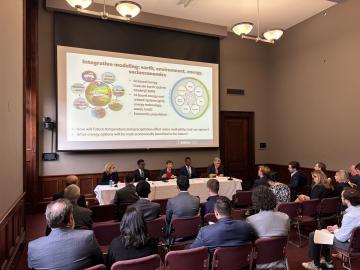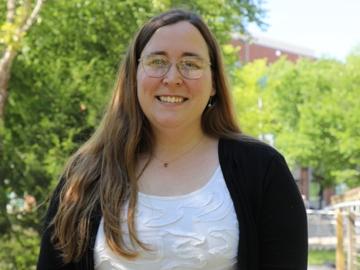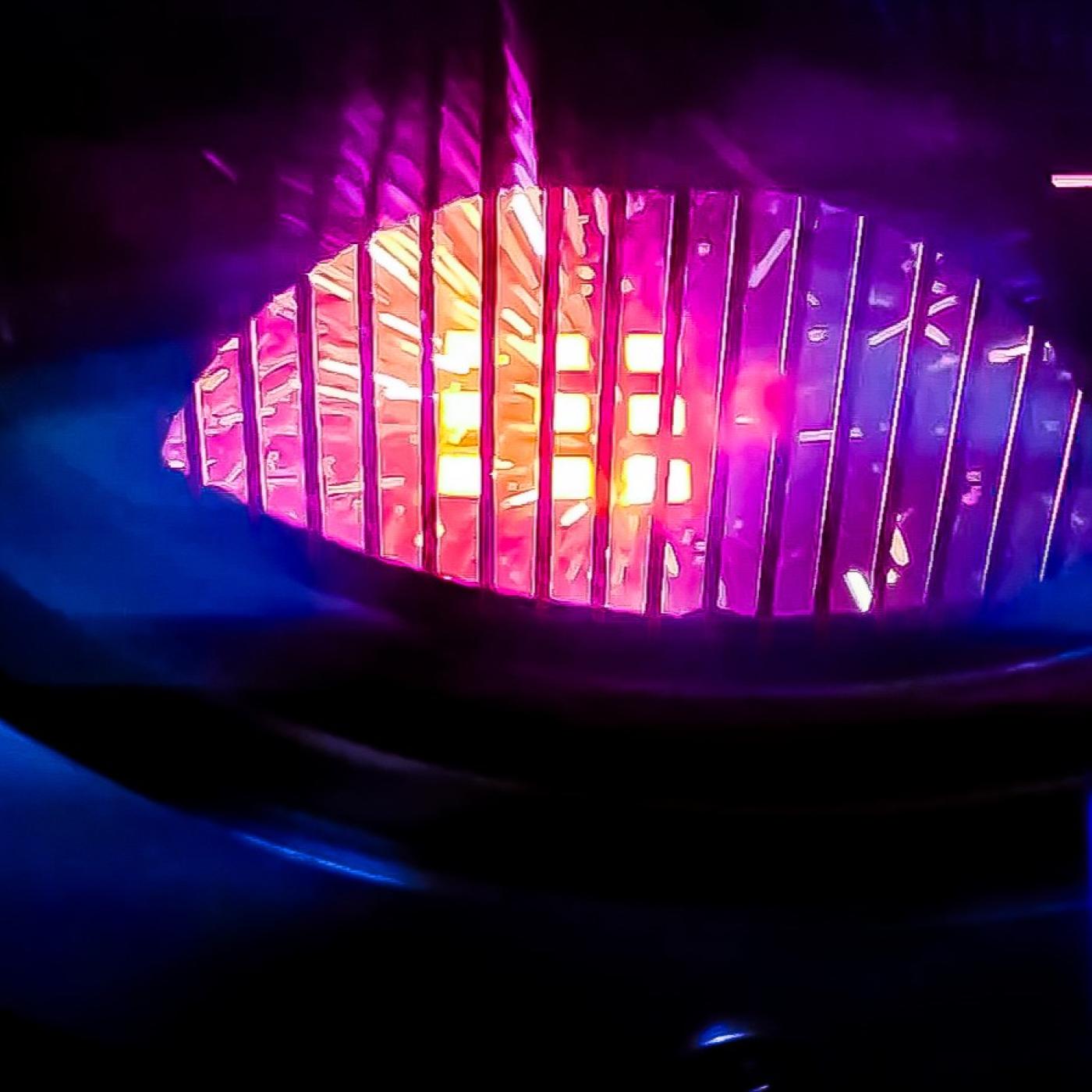
Filter News
Area of Research
- Advanced Manufacturing (3)
- Biology and Environment (38)
- Biology and Soft Matter (1)
- Clean Energy (25)
- Climate and Environmental Systems (1)
- Computational Biology (1)
- Computer Science (1)
- Electricity and Smart Grid (1)
- Functional Materials for Energy (1)
- Fusion and Fission (6)
- Isotopes (20)
- Materials (43)
- Materials for Computing (5)
- National Security (22)
- Neutron Science (46)
- Nuclear Science and Technology (7)
- Supercomputing (58)
News Type
News Topics
- (-) Artificial Intelligence (64)
- (-) Climate Change (66)
- (-) Cybersecurity (20)
- (-) Frontier (33)
- (-) Isotopes (40)
- (-) Molten Salt (2)
- (-) Neutron Science (71)
- (-) Physics (43)
- (-) Space Exploration (13)
- 3-D Printing/Advanced Manufacturing (66)
- Advanced Reactors (14)
- Big Data (41)
- Bioenergy (60)
- Biology (70)
- Biomedical (38)
- Biotechnology (14)
- Buildings (35)
- Chemical Sciences (40)
- Clean Water (16)
- Composites (14)
- Computer Science (113)
- Coronavirus (22)
- Critical Materials (7)
- Decarbonization (56)
- Education (2)
- Emergency (2)
- Energy Storage (51)
- Environment (129)
- Exascale Computing (36)
- Fossil Energy (4)
- Fusion (42)
- Grid (31)
- High-Performance Computing (64)
- Hydropower (5)
- Irradiation (1)
- ITER (3)
- Machine Learning (31)
- Materials (78)
- Materials Science (79)
- Mathematics (8)
- Mercury (7)
- Microelectronics (3)
- Microscopy (31)
- Nanotechnology (32)
- National Security (58)
- Net Zero (10)
- Nuclear Energy (74)
- Partnerships (29)
- Polymers (16)
- Quantum Computing (25)
- Quantum Science (39)
- Renewable Energy (1)
- Security (16)
- Simulation (41)
- Software (1)
- Statistics (2)
- Summit (36)
- Sustainable Energy (61)
- Transformational Challenge Reactor (4)
- Transportation (43)
Media Contacts

Researchers led by the University of Melbourne, Australia, have been nominated for the Association for Computing Machinery’s 2024 Gordon Bell Prize in supercomputing for conducting a quantum molecular dynamics simulation 1,000 times greater in size and speed than any previous simulation of its kind.

Biochemist David Baker — just announced as a recipient of the Nobel Prize for Chemistry — turned to the High Flux Isotope Reactor (HFIR) at Oak Ridge National Laboratory for information he couldn’t get anywhere else. HFIR is the strongest reactor-based neutron source in the United States.

The Advanced Plant Phenotyping Laboratory at ORNL utilizes robotics, multi-modal imaging, and AI to enhance understanding of plant genetics and interactions with microbes. It aims to connect genes to traits for advancements in bioenergy, agriculture, and climate resilience. Senior scientist Larry York highlights the lab's capabilities and the insights from a new digital underground imaging system to improve biomass feedstocks for bioenergy and carbon storage.

To bridge the gap between experimental facilities and supercomputers, experts from SLAC National Accelerator Laboratory are teaming up with other DOE national laboratories to build a new data streaming pipeline. The pipeline will allow researchers to send their data to the nation’s leading computing centers for analysis in real time even as their experiments are taking place.

Prasanna Balprakash, director of AI programs for ORNL, discussed advancing climate and weather research through high performance computing and artificial intelligence as part of a September 18 panel for the United States Senate.

The Smoky Mountain Computational Sciences and Engineering Conference, or SMC24, entered its third decade with the 21st annual gathering in East Tennessee.

Karly Harrod, recipient of the Early Career Competition Laboratory Directed Research and Development award at ORNL, is focused on extracting disease data from reports. Passionate about global health, she looks forward to applying her expertise to climate data within the geospatial science and human security division.

Scientists at ORNL used neutrons to end a decades-long debate about an enzyme cancer uses.

The Oak Ridge Leadership Computing Facility welcomed users to an interactive meeting at the Department of Energy’s Oak Ridge National Laboratory from Sept. 10–11 for an opportunity to share achievements from the OLCF’s user programs and highlight requirements for the future.

ORNL's Spallation Neutron Source, the nation’s leading source of pulsed neutron beams for research, was recently restarted after nine months of upgrade work.


